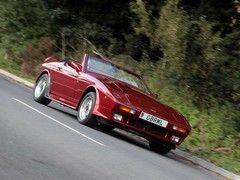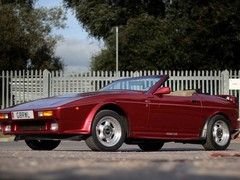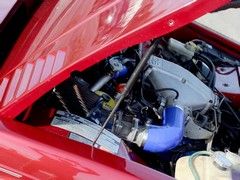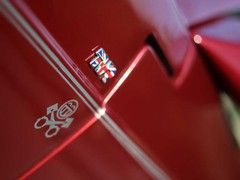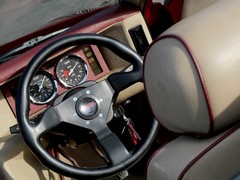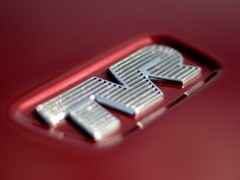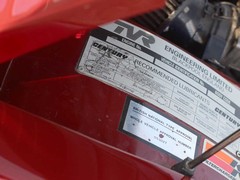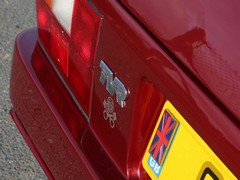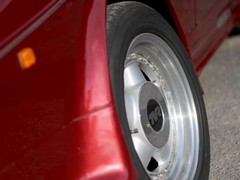TVR wedge: PH Heroes
Do PH Heroes get any more heroic than this? Chest wig at the ready - it's the TVR wedge!
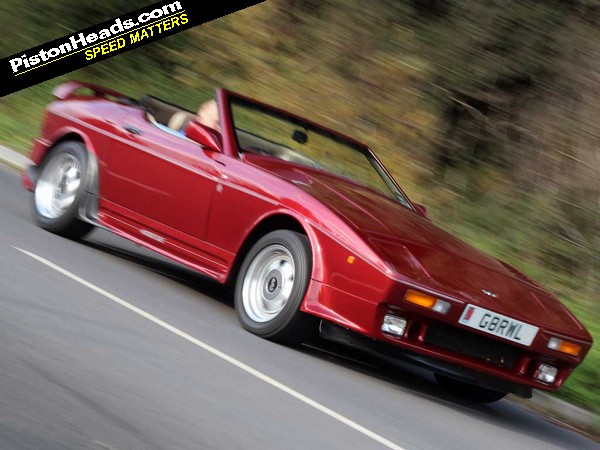
It's the value for money that's really startling about these TVR wedges. Right now, you can easily pick up a good 350i for considerably less than £5,000, and even PHer Simon Marzell's lovely 1990 400SE featured here (and previously on PH Carpool) was bought for just £6,800. But values are on the up, and it won't be long before these wedges become fashionable as well as blindingly exciting. But that's why we love TVRs - they aren't for everyone, and revel in the fact.
Casting an eye over Simon's 1990 TVR 400SE, all muscle, sinew and attitude, it's hard to believe that the first incarnation of this car, the Tasmin, was conceived as a sophisticated rival to the Lotus Eclat, styled by the same pen-man, Oliver Winterbottom. The new look was intended to allow TVR to break away from the 3000M series - a car that was very clearly an evolution of the original Grantura.
New-school
Under the skin, it was pretty much all-new. The chassis was a Lotus-inspired ultra-stiff steel backbone that forked out at the front, to enclose the engine - and at the rear to accommodate the suspension pick-ups. The front suspension was lifted straight from the Ford Granada and Cortina, as were the steering rack and spring/damper units. At the rear things were more exotic, thanks to an arrangement that TVR claimed cost £1,000 per car to put together. A Jaguar differential was paired up with a Lotus-esque box-section. Inboard discs were fitted, and assisted reducing sprung masses.
The problem was despite its technical excellence, the wonderful wedged-shaped Tasmin was launched in the midst of a recession and slow sales, combined with all that new vehicle investment, saw TVR struggle financially. There was also considerable resistance to the new wedge look from existing customers. The end result was that chemical engineering consultant Peter Wheeler swooped in to take over the daily running of the Blackpool carmaker in 1981. Although we couldn't have suspected it at the time, this was the best thing that ever happened to TVR.
High praise
In 1983 the V8-powered 350i arrived, and unlike the pricey Tasmin, this looked like a sensational bargain. CAR magazine called it 'the greatest sports car since the Ferrari 275GTB/4' - and although that was maybe a little bit over the top, V8 power transformed the Tasmin. It was followed by the 390SE in 1984 and the 420SE (and SEAC) in 1986. From that point on, TVR's future direction was set, and it was tied in with increasingly powerful, lightweight, affordable sports cars.
Increasingly the wedges were seen as the bad boys of the British car industry - and by the time the 420 SEAC appeared in 1986 packing 325bhp, they had earned themselves an enviable 'widowmaker' reputation. Much of what transformed an SE into an SEAC was carried over to the 1988 facelift 400SE (and the following year's 450SE), and pound for pound, these late wedges are probably the best of the lot.
Even from 50 paces, Simon Marzell's 400SE looks a much more well-developed car than its predecessor, with a few of those chiselled edges smoothed off for good measure. It sits on wide OZ Racing alloys, and wears a large rear spoiler with a diffuser too - it's hardly a car for shrinking violets, exuding a menacing air that its 'Growl' registration number does little to dispel.
Loud and proud
The 400SE walks the walk, though. With 275hp and a kerbweight of just 1,150kg, its claimed performance benchmarks of 5.0 seconds for the 0-60mph run and a 150mph maximum, are if anything, a little conservative. Simon agrees, "We've hit the drag strip at Santa Pod and posted a respectable 14.2," he says. Given the art needed, and the sheer theatre involved in getting a 400SE off the line cleanly, that's an excellent time, putting slap, bang up with some very tasty machinery.
When you drive any V8 wedge, your senses will be dominated by its loudness. There is no getting away from that. From the moment you crank the TVR Power V8 into life, the exhaust note is just wonderful - all rumbley and expansive, and enhanced in this case by a slightly shortened silencer. Blipping the throttle is almost narcotically addictive. Once underway, you'll often find the heavy gearchange a bit obstructive, and visibility a bit lacking in tight bends, but you really can forgive this V8 wedge for such inconveniences once the thing goes ballistic above 2,500-3,000rpm.
On your toes
In the dry, the fat 225/50R15 rear tyres give you more than enough grip, as long as you're not too playful with the throttle at inopportune moments. On tougher B-roads, it's definitely a slow-in, fast-out kind of car that you'll adore giving it plenty on corner exits, once you're sure of the traction levels. The independent suspension is impressive, handling corners and road irregularities without drama, and the steering has tons of feel. But clearly it's best not to become over-confident and instead, treat it with respect. Simon backs that up. "It's a real challenge to drive quickly, and demands respect. It will bite back and hard if you get it even slightly wrong - it has character, big V8 character."
So, with all that performance at such reasonable money, there has to be a drawback. Well. You do need to research well, when planning on buying. There are plenty of build quality and electrical issues to contend with. They all rattle and creak, and the steering columns wobble, so don't fret over that - instead make sure the Rover V8 stays cool, and the coolant temperature needle doesn't wander anywhere far from the mid-section of the gauge. Get that right, and make sure the backbone isn't rusty, and you'll be rewarded with a brilliant sports car that looks like no other, and has a lively social scene to match.
And that's why the TVR 400SE is a proper PH Hero.
TVR 400SE
Engine: 3,948cc V8-cyl
Transmission: 5-speed manual
Power (hp): 275@5,500rpm
Torque (lb ft): 270@3,500rpm
0-60mph: 5.0 sec
Top speed: 150mph
Weight: 1,150kg
On sale: 1988-1991
Price new (1990): £24,995
Price now: £5,000-£15,000
Gassing Station | General Gassing | Top of Page | What's New | My Stuff

